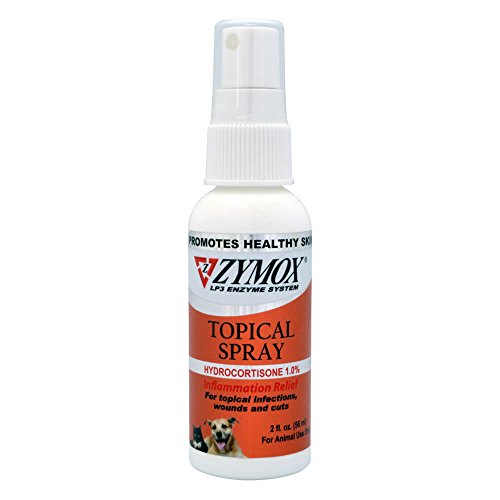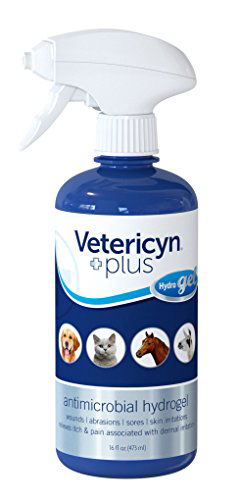If you’re one of those pet parents who obsesses over every little potential health risk revolving around your precious feline furball, don’t worry. Today’s topic is indeed something you should be obsessing over, especially if your pet is affected by it.
Out of the numerous skin and fur coat problems that affect felines, the threat of cat acne is not only common, but also quite dangerous.
In other words, even if you’re paying attention to your kitty’s skin and coat care, you can never be 100% sure that your furry pal won’t get acne.
While it may sound troublesome and even repulsive, feline acne isn’t that rare. It can affect cats from all breeds and ages. And unlike acne in humans, when it comes to felines, it doesn’t break out during the cat’s puberty.
So, what is feline acne, what’s causing it, what will happen to your kitty if it’s suffering from it, and what are the treatment options?
If you’re already panicking about the possibility that your own fluffy pal has acne, take a deep breath and calm down. We’ll cover all of afore-mentioned and some other subjects in further detail below.
What Is Cat Acne?
Here’s the short answer – cat acne is a skin disease. It often gets mistaken for a rash, similar to the rashes caused by allergies. What’s more, it’s also often mistakenly associated with an infected wound, mange, dermatitis and other similar skin conditions.
Cat acne mainly occurs on a furball’s face, especially in the chin and mouth areas.
Depending on the severity of the condition, it may look like blackheads, a small dirty spot, white-head pimples, pustules or even a wound. The area may swell up or get infected to the point of causing other health issues.
Feline acne could occur only once, from time to time or become a persistent problem throughout the kitty’s lifetime.
Since each furball is unique on its own, there is no ultimate way to tell if your own will be affected by acne more than once in its life – if affected at all. And while feline acne is definitely not something you should neglect or not worry about, it’s actually treatable. In fact, it’s among the top most widespread feline skin conditions, which vets have to deal with.
What Are The Common Causes Of Cat Acne?
Most cat owners will tell you that feline acne is the result of poor health care. While there’s some truth to that statement, there’s a variety of factors that could cause these problematic break outs.
Stress
Just as it is with us, human beings, stress has a negative effect of feline furballs too. Your fluffy pal can experience a wide range of emotions. Chronic anxiety and constant stress can easily become the culprits of cat acne, causing blemishes and other skin problems.
Kittens, as well as their older counterparts, can get stressed out by numerous factors. Sometimes it’s as simple as an unfamiliar scent, a noisy environment or a new furniture piece.
Poor Immune System
Cats of all breeds and ages can suffer from immune system disorders. Newborns and senior cats have weaker organisms than adult felines. If your own pet’s immune system is in need of a severe boost, it won’t be able to fight off the dangers of various infections. It will also predispose the cat to developing skin problems like cat acne.
Improper Grooming
Even though grooming is sometimes a nightmare, especially when it comes to longhaired breeds, it’s still a necessity. Using improper cat brushes, skipping the occasional bath or over-bathing, allowing your pet’s fur to matt and tangle, and not paying attention to the cat’s skin type can reflect negatively on its overall health.
Apart from cat acne the lack of proper grooming can also lead to hairball built ups. And the latter one is far more life threatening to your beloved kitty than acne is.
Hyperactive Sebaceous Glands
Cats, dogs and other animals have sebaceous glands just like humans do. And sometimes these glands can cause problems. If your feline furball’s sebaceous glands happen to be hyperactive, they could trigger various skin problems – one of which is acne.
Unfortunately, you can’t really fix the way the sebaceous glands are working, but you can devote more of your leisure time to taking better care of your pet’s skin and fur coat.
Side-Effects To Medication And Bacteria
Dirty or plastic food and water bowls often result in cat acne due to the variety of malicious bacteria found on them. However, acne could easily break out after the cat has come into contact with bacteria found elsewhere. For example, the condition can be triggered by substances present in some medications to which your cat is allergic.
Excessive Chin Rubs
By default cats adore being pet on the chin and neck area. Unfortunately, excessive chin rubs can lead to acne.
Your fingers carry skin oils, bacteria, dead cells and tons of other unpleasant things, which could irritate your pet’s skin. On top of that, many felines love rubbing themselves against their owners and furniture pieces as a way of scent-marking their territory or displaying affection. Regardless of how clean your house or apartment is, excessive chin rubbing against various surfaces can easily damage the kitty’s skin.
Signs And Symptoms Of Cat Acne
Each kitty is unique on its own. As such, not all cats display the same symptoms of cat acne. There are, however, some basic telltale signs of chin and face acne, which you should be looking out for.
- Blackheads
- Whiteheads
- Pimples
- Dirty blemishes that don’t come off when rubbed
- Infected pustule-like spots
- Swollen sections or wounds caused by scratched comedones
- Sectional hair loss
Depending on how itchy the problematic area is for the cat, it could become infected or not. If the furball keeps scratching, the acne will eventually become a wound. That could lead to secondary infections.
Some cats won’t try scratching the acne at all, but that doesn’t mean you should underestimate the condition or not treat it.
Feline Acne Treatment: How To Treat Cat Acne
Here’s the harsh truth – there are no homemade remedies to help cure the problem. What’s more, you can’t use any type of creams, sprays and other products manufactured to treat acne in humans. Those things will only harm your beloved kitty, so stay away from them.
What you can do, however, is take the cat to the vet’s office. The doctor will need to observe and examine the problematic area. In some cases he/ she will need to take samples of skin scrapes in order to look for fungal infections and other issues, but only if the acne has caused severe inflammation.
After the diagnosis has been carried out, the vet will come up with proper a treatment plan depending on the kitty’s case. Anti-microbial medications, vitamins and supplements, increased fluid intake and topical solutions are the most commonly prescribed products.
Risks: What Will Happen If You Don’t Treat The Acne On Time?
Even though feline acne isn’t itchy for some cats and as such it doesn’t bother them, it can still harm them. If left untreated, the infected areas will expand and will eventually lead to other problems.
If your furball is more sensitive to the acne, it will be in pain. Meowing, yowling and acting aggressively whenever you’re trying to approach it are common signs that the kitty is hurting. What’s more, the pain will make it uneasy and stressed out, which could result in a number of other health problems.
Last, and perhaps least important – if the acne isn’t treated properly, it will become quite unsightly. Needless to say, everybody wants to have a cat with beautiful, healthy and velvety skin and fur coat.
Alternative Treatment Options
Creams and medication manufactured for treating acne in humans are a taboo for animals. However, there are a few safe topical solutions, with which you can carefully rinse, cleanse and soothe the problematic areas. Here are the best acne treatment products available on the market, none of which require special prescriptions.
Our review process is unbiased and based on extensive research. If you buy through the links on our site, we may earn a commission.
Zymox Pet Spray With Hydrocortisone

Suitable for cats of all breeds and ages, the Zymox spray should be used only as a topical solution.
It’s efficient against all sorts of bacteria and speeds up the healing process of various wounds and skin infections. It has anti-microbial properties with 1% Hydrocortisone. One of the many advantages of this spray is that you don’t need to clean up the infected spot prior to spraying it. In other words, your pet won’t have to endure any more pain as you won’t need to wrap it in a towel in order to forcefully clean it up.
The Zymox spray is currently a best-seller among itch remedies for felines and unlike many other best-selling products, this one actually won’t cost you a small fortune.
>> Click here to read more reviews and see today’s best price on Amazon.com <<
Vetericyn Plus Hydrogel

The Vetericyn Plus hydrogel is suitable for cats, dogs and other domestic animals.
It has an anti-microbial formula, which reduces the itching and the pain associated with the infected spot. Vetericyn’s product doesn’t have any alcohol, steroids or other harmful ingredients. As such, the hydrogel is 100% safe when ingested, so you don’t have to worry about your kitty licking it off.
Moreover, it works on all skin types, so if your feline pal has a more sensitive skin by default, the gel won’t harm it.
One particular downside to the hydrogel, however, is its price. If you’re on a tight budget, you should look for other, less expensive products. Even though the gel is efficient against various infections and skin irritations, you should either get a smaller container or just a cheaper alternative.
>> Click here to read more reviews and see today’s best price on Amazon.com <<
Pet MD’s Antiseptic Wipes

Pet MD”s antiseptic wipes are among the best cat wipes you’ll find.
Unlike your typical wipes, these ones actually have a strong anti-microbial formula, which relieves itchiness and speeds up the healing process with conditions like acne, abscess, fungal infections, and so forth.
The container includes a total of 50 wipes soaked in an antiseptic, non-stinging solution. One of the many advantages of these wipes is that you can get them for less than $20 bucks. And regardless of their price, they do wonders against acne. Like all of Pet MD’s products, the wipes are not only efficient, but they’re also approved by vets.
The only downside is that you shouldn’t allow the cat to lick the treated area before the applied solution has been absorbed by the skin, since there are a few ingredients, which should not be ingested.
>> Click here to read more reviews and see today’s best price on Amazon.com <<
If you’re suspecting that your cat has acne, but you’re not quite convinced if it’s indeed feline acne, don’t try to self-diagnose your pet. Instead, call the vet’s office, explain the issue and take the kitty to the doctor for a check-up at your earliest convenience.


Thank you for the information